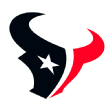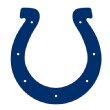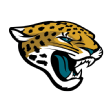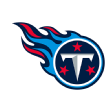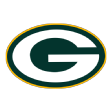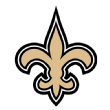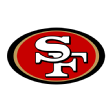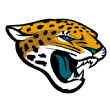Keith Law's top 30 2019 MLB draft prospects
It's just not a good draft class this year. It's not good up at the top and not in terms of depth, with a particular paucity of college pitchers and some modest strength in the middle infield in high schools and college. I do think the No. 1 pick today would be clear and that the college bats listed below will all settle into the top 20 or so as most teams gravitate toward the perceived safety of that group.
1. Adley Rutschman, C, Oregon State: Rutschman is the best player in the college crop and probably the best player in the draft class. He's also currently the best bet to be the first overall pick, with Baltimore on the clock.
2. Andrew Vaughn, 1B, California: Vaughn is the best pure hitter in the class. While his insane numbers last spring for the Golden Bears were boosted by weak pitching in the Pac-12, I don't hear any skepticism about his hit tool from scouts.
3. CJ Abrams, SS, Blessed Trinity HS, Roswell, Georgia: Abrams is a plus-plus runner with a smooth left-handed swing that should produce contact but probably no more than average power. He's a shortstop now but is more likely to end up at another position, possibly center field -- where his elite speed will fit.
4. Bobby Witt Jr., SS, Colleyville (Texas) Heritage HS: An athletic two-way player whose pro future is at shortstop, Witt comes into the spring as the top high school talent -- or at least the best-known one -- but will be dinged for his age, as he'll turn 19 a few weeks after the draft.
5. Josh Jung, 3B, Texas Tech: Jung mashed as a sophomore, hitting .392/.491/.639 with more walks than strikeouts while possessing a big swing yet good hand-eye coordination. He might start as a third baseman but probably moves to first.
6. Kameron Misner, OF, Missouri: Misner was off to a huge start last spring but injured his foot in mid-April and ended up with just 125 at-bats for the Tigers. When healthy, he's a plus runner with a very good swing that shows loft for power, and he could end up staying in center field in pro ball, which would make him a likely top-10 pick.
7. Bryson Stott, SS, UNLV: Stott is a potential long-term shortstop with a 60 arm. He's an average runner with an above-average present hit tool and more power to come.
8. Matthew Allan, RHP, Seminole HS, Sanford, Florida: The 6-foot-3 Florida commit has been 93-97 mph early this spring with a plus curveball and feel for a changeup.
9. Corbin Carroll, OF, Lakeside HS, Seattle: A very athletic, if undersized, prep outfielder from Seattle, Carroll also gets raves for his makeup and style of play, possessing top-15 potential depending on how scouts view his potential power.
10. Daniel Espino, RHP, Georgia Premier Academy, Statesboro, Georgia: Espino has been up to 99 mph with a hard curveball, and his arm action has improved to the point where you could at least discuss him as a long-term starter, although I'm sure there will be a lot of debate this spring about what his ultimate role is.
11. Jackson Rutledge, RHP, San Jacinto JC: The transfer from Arkansas has size, present velocity (up to 97 mph), a potentially plus slider and a high slot that gives him some extra deception.
12. JJ Bleday, OF, Vanderbilt: One of the best college bats in the class, he's coming off a strong summer on the Cape and a sophomore year in which he walked more than he struck out. Bleday has a good swing that should produce power, and he's athletic enough to add value in an outfield corner.
13. Alek Manoah, RHP, West Virginia: Listed at 6-foot-6, 260 pounds, Manoah looks big-league-ready and throws mid-90s, touching 98 with a power slider in his first outing of the year while punching out 13 in six innings against Kennesaw State. He pitches exclusively out of the stretch and has a below-average changeup.
14. JJ Goss, RHP, Cypress Ranch HS, Houston: Goss has been 90-94 mph already with some projection for more and shows a plus breaking ball with an aggressive approach, attacking hitters in the zone with both pitches.
15. Jimmy Lewis, RHP, Lake Travis HS, Austin, Texas: Lewis is a still-projectable right-hander who's 90-94 mph now with the makings of a plus breaking ball. He has an athletic, loose body that points to a lot of potential upside.
16. Shea Langeliers, C, Baylor: The "other" college catcher in the class also looks like a top-10 pick but will be out several weeks after breaking a hamate bone during the season's opening weekend. He's a premier defender but hit just .252/.351/.496 as a sophomore and won't get much of a chance to improve on that this spring.
17. Riley Greene, OF, Hagerty HS, Oviedo, Florida: Greene is considered one of the best pure high school hitters in the class, with some power to go with it, but below-average tools everywhere else probably limits him to left field. That profile hasn't gone well with recent high school hitters taken in the first round (Trent Grisham, Billy McKinney).
18. Brett Baty, 3B, Lake Travis HS, Austin, Texas: Baty projects to hit for average and power with a sweet left-handed swing and has unusual size for a high school kid, but he'll get crushed by analytical models because he'll be 19 years and six months old by draft day.
19. Quinn Priester, RHP, Cary-Grove HS, Cary, Illinois: A cold-weather kid who had a bit of a breakout at last summer's Under Armour Game, Priester has been up to 95 mph with a potential plus curveball, a very smooth delivery and some physical projection left.
20. Brennan Malone, RHP, IMG Academy, Bradenton, Florida: Malone has been up to 96-97 mph in short outings and looks like he'll fill out to hold mid-90s as a starter with a short curveball that can show above average and a delivery he can repeat, although he's still more a thrower/projection arm than a complete pitcher.
21. George Kirby, RHP, Elon: Kirby headlines the best Elon draft group in ages, as the Phoenix have three potential top-100 picks. Kirby has been up to 95 mph and pounding the strike zone through two starts after a dominant summer as a reliever on the Cape.
22. Braden Shewmake, 3B, Texas A&M: Shewmake is tall and wiry with a noisy approach and long swing that has actually produced great contact rates without much power.
23. Rece Hinds, 3B, IMG Academy, Bradenton, Florida: Hinds has huge raw power, which he has been showing off over the past few summers as an underclassman, but his other tools are all in question. His hit tool should be better tested now that he has moved to IMG Academy and will play at USA Baseball's NHSI event. Hinds is at third now, but his size and lack of speed might push him to first.
24. Zack Thompson, LHP, Kentucky: Thompson has come out strong with premium stuff again this year, hitting the mid-90s with an above-average slider, but concerns over his injury history -- he missed time last spring with a sore elbow and doesn't have a great delivery -- as well as his trouble working deep into games might keep him toward the back of the first round.
25. Will Wilson, SS, NC State: Wilson has hit for average and power for two years with the Wolfpack, although there's concern the power won't translate with wood bats. He's adequate at shortstop but lacks the quickness of most players at the position, and college "maybe" shortstops more often end up at second base.
26. Will Holland, SS, Auburn: Holland is a solid defender at short who came into power last year after failing to hit as a freshman at Auburn. He continued to produce at the plate all summer on the Cape and could end up among the top 20 picks as a safe selection based on track record and position.
27. Hunter Barco, LHP, Bolles School, Jacksonville, Florida: Barco was 90-95 mph this week with an improved slider and now a splitter. He has his arm slot higher after he finished last summer with a lower slot and reduced velocity, so he's back in the late-first-round discussion.
28. Logan Davidson, SS, Clemson: Davidson's reputation has outpaced his production, as he punched out 68 times last spring for Clemson and had a miserable summer on the Cape, hitting .194/.292/.266 while ranking among the league leaders in strikeouts. However, he's a shortstop with power and speed and has produced for two years for the Tigers despite the strikeouts.
29. Graeme Stinson, RHP, Duke: Stinson has been up to 97 mph regularly in his first two years at Duke with a power slider, but a tough arm action and command questions point to a more likely pro role in relief. He hasn't thrown nearly as well or as hard so far this spring.
30. Maurice Hampton, OF, Memphis (Tennessee) University HS: A very athletic outfielder who started to show progress as a ballplayer last summer, especially at the plate, Hampton is a plus-plus runner with very quick hands and is also
a top football recruitwho's committed to play both sports at LSU.
I didn't rank Carter Stewart (RHP, East Florida State JC) because he has come out of the gate poorly this spring. The eighth pick in last year's draft, Stewart didn't sign with Atlanta after the team offered him a reduced bonus due to a perceived injury to his wrist. He was No. 2 on my draft board last year after sitting mid-90s for most of the spring with a wipeout curveball, but he has gotten thicker this year and seen his stuff go backward in his first two outings.
2019 MLB Draft: First-Round Order
1. Orioles (47-115)
2. Royals (58-104)
3. White Sox (62-100)
4. Marlins (63-98)
5. Tigers (64-98)
6. Padres (66-96)
7. Reds (67-95)
8. Rangers (67-95)
9. Braves (compensation for Carter Stewart) *
10. Giants (73-89)
11. Blue Jays (73-89)
12. Mets (77-85)
13. Twins (78-84)
14. Phillies (80-82)
15. Angels (80-82)
16. D-backs (82-80)
17. Nationals (82-80)
18. Pirates (82-79)
19. Cardinals (88-74)
20. Mariners (89-73)
21. Braves (90-72)
22. Rays (90-72)
23. Rockies (91-72)
24. Indians (91-71)
25. Dodgers (92-71)
26. D-backs (compensation for Matt McLain) *
27. Cubs (95-68)
28. Brewers (96-67)
29. Athletics (97-65)
30. Yankees (100-62)
31. Dodgers (compensation for J.T. Ginn) *
32. Astros (103-59)
33. Red Sox (108-54)
* For unsigned 2018 first-rounder


































